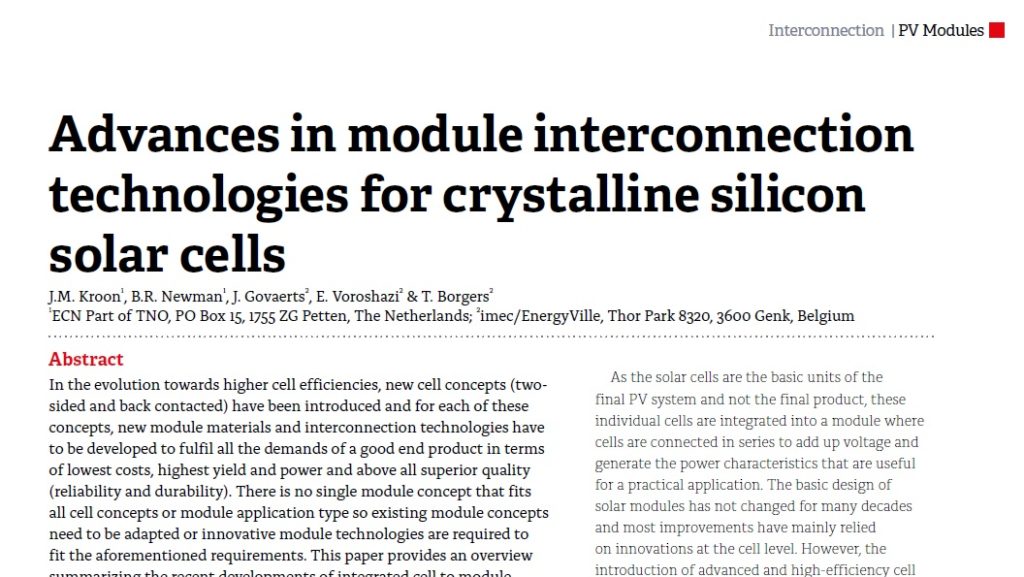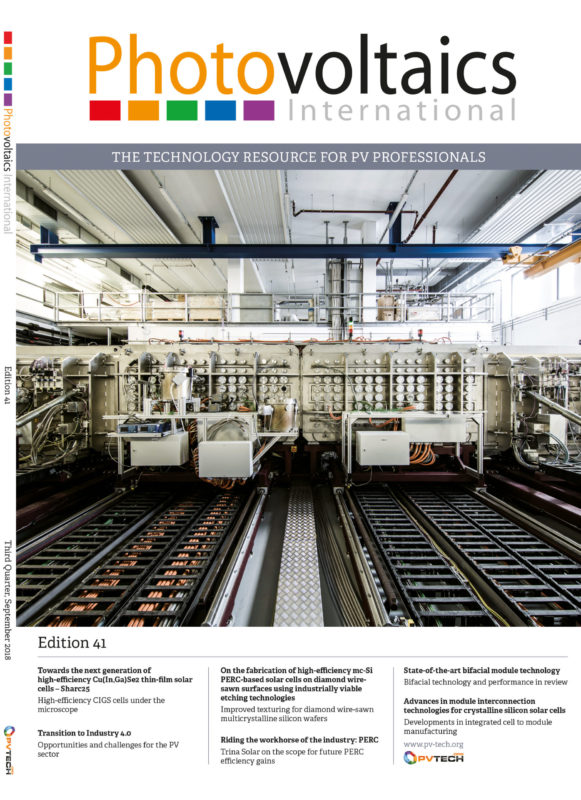By Jan Kroon; Dr. Bonna Newman; Jonathan Govaerts; Dr. Eszter Voroshazi; Tom Borgers
In the evolution towards higher cell efficiencies, new cell concepts (twosided and back contacted) have been introduced and for each of these concepts, new module materials and interconnection technologies have to be developed to fulfil all the demands of a good end product in terms of lowest costs, highest yield and power and above all superior quality (reliability and durability). There is no single module concept that fits all cell concepts or module application type so existing module concepts need to be adapted or innovative module technologies are required to fit the aforementioned requirements. This paper provides an overview summarizing the recent developments of integrated cell to module manufacturing approaches such as multi-busbar, multi-wire, half-cell and shingling technologies for two-side contacted cells and advanced soldering, woven fabric and foil based module technologies for back contacted cells aiming for the highest power outputs, lowest costs and longest lifetimes.


